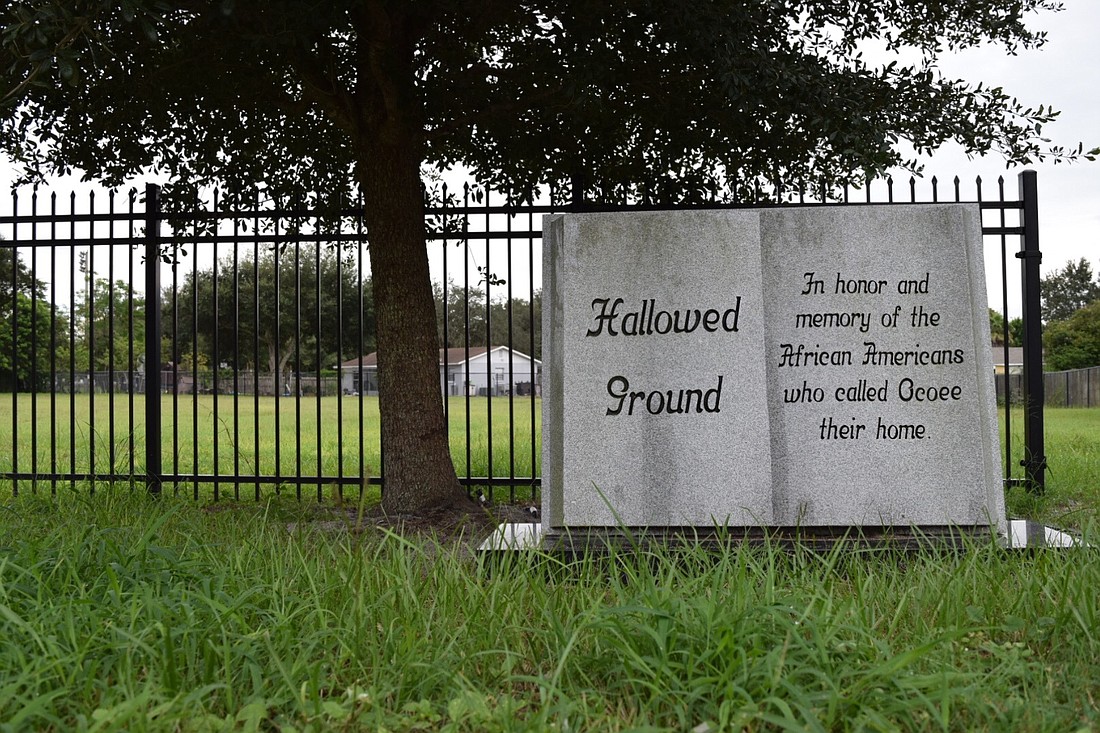- April 26, 2024
-
-
Loading

Loading

OCOEE – Ocoee is currently considering a project proposed to erect two markers dedicated to African Americans who were lynched for trying to vote in November 1920.
The event – referred to in historical literature as both the Ocoee Election Day Massacre of 1920 and the Ocoee Riots – resulted in the brutal murders of at least six African Americans by the Ku Klux Klan and the exile of the entire black population.
However, because accounts of what occurred vary widely, many argue the number of those killed during the dates of Nov. 2 to 3 in 1920 might be significantly higher, with estimates reaching as high as 60.
Among those who consider six to be an extremely conservative number is the Equal Justice Institute (EJI) – a nonprofit organization based in Montgomery, Alabama, that makes it its mission to challenge racial injustice.
“In Ocoee, the research shows – and we’ve done a lot of research – that the lowest number of killings was six and the highest number we have heard is 60,” said Dr. Kristin Congdon, founder of EJI’s Orange County Task Force. “Almost everybody estimates it on the higher end of the scale, but it’s hard to know specifically. EJI has said it’s 32 deaths, which is, from what I’ve read, a conservative estimate.”
For the past ten years, EJI has been working with Ocoee’s Human Relations Diversity Board to locate two markers in the city memorializing those who were killed in 1920.
During the Aug. 15 commission meeting, city leaders authorized the first of the two markers. The first marker is to be installed at a site the city dedicated as Hallowed Ground in November 2007, which was initially believed to be an African-American cemetery.
The second marker, which EJI asked to have located in a more visible spot near Starke Lake, was tabled by the city commissioners due to all the upcoming construction planned downtown.
Congdon said she hoped to have the first marker erected by November. But Congdon doubts it will happen due to disagreements regarding the wording on the marker – specifically, the estimated number of those killed.
“The text is what we’re trying to negotiate now,” Congdon said. “There have been a lot of rewritings of the text and the mayor and city commissioners have asked to do their own research on the number. EJI wants it to say a number over 30, but they said they don’t believe that many people were killed.”
“Whether we like it or not, this has become a part of our legacy. And whatever the facts are, we’re willing to accept that, but we cannot and will not adhere to a situation that is not factually accurate. And I don’t believe it’s factually accurate.” – William Maxwell
During the meeting, the Ocoee City Commission said it would do its own research to verify how many died during the riots. The city has been provided a lengthy bibliography citing their informational sources and scholarly articles by EJI.
According to Congdon’s research, there were 33 lynchings in Orange County, 32 of which were connected to the Ocoee massacre. One of those individuals, July Perry, was hung from a telephone pole in Orlando. Perry’s gravesite is located in the Greenwood Cemetery in Orlando.
But according to 22-year Ocoee resident William Maxwell, who has served on the HRDB for 10 years, that number is completely inaccurate.
“They wanted to say that 32 people were lynched in Ocoee, but there is nothing in my 10 years of research on this event that clearly documents or identifies that number,” Maxwell said. “And you know, the city’s position right now is that we want to take every positive measure we can to support this project because it would be a closure to a very dark chapter in the history of our city. And I think that’s the only way that we can move on.”
Maxwell also emphasized the fact that Ocoee was unincorporated at the time of the massacre, which he believes should be reflected.
“The problem is that the Ocoee massacre – and I use that term very loosely – occurred in 1920, and Ocoee was not yet a municipality under the state of Florida,” he explained. “Of course, that doesn’t detract from what happened, but I think we need to put that all in perspective, historically, in order to tell the story, honor the memory, heal the wounds and put forward a factual narrative.”
In addition to the markers, EJI has asked for soil from the lynching sites in Ocoee to be preserved in jars and exhibited in the upcoming From Enslavement to Mass Incarceration Museum in Montgomery, Alabama, set to open Spring 2018. However, the city has expressed reservations with the request after learning the museum exhibit would also state that 32 estimated lynchings occurred in Ocoee.
“I’m not against what we’re trying to do … but there’s nowhere that shows 32 people (were killed) in this city," Ocoee Mayor Rusty Johnson said. "… We know what happened here 99 years ago… and we have no problem recognizing that, but it’s got to be the truth; it’s got to be reality.”
–––
Contact Gabby Baquero at [email protected]